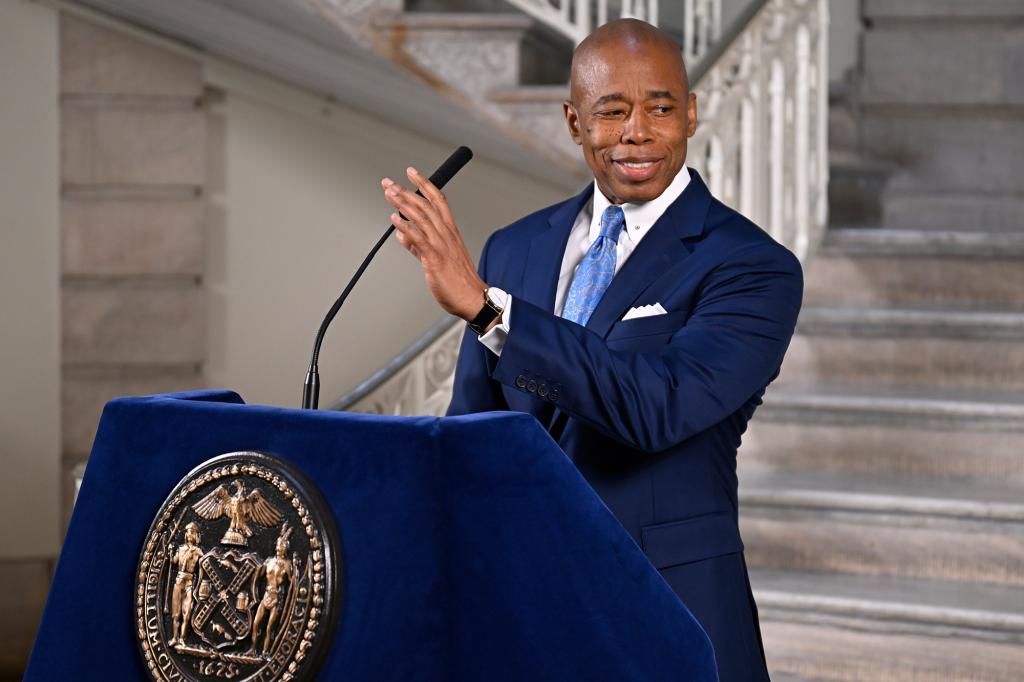What happened to austerity?
In February, Mayor Adams was the Grinch when it came to his first city budget proposal, for the fiscal year that starts this July (FY 2023). Two months later, in his revised budget out Tuesday, he has turned into Santa Claus. Adams had better enjoy his out-of-season Christmas, though, because come winter, he may face such an inflationary crisis that all that’s left is coal.
Adams unveiled a budget Tuesday that tops out at $103.6 billion, $77.5 billion of it from city taxpayers (the remainder comes from federal and state taxpayers, through regular grants to the city).
Four months of being mayor has made Adams feel expansive and expensive. The new budget is a whopping $2.7 billion more than he proposed to spend just two months ago, only $300 million of it covered by federal money.
The mayor now proposes to hike city-funded spending 4% above the final de Blasio budget. Adams does this without — still — having a major spending initiative of his own, like Bill de Blasio’s pre-K program in 2014. For all his interest in public safety, he hasn’t even proposed extra police classes.
OK: Modest spending increases on foster care, summer jobs for kids and even planting trees and sweeping the streets more often can make a big difference in people’s lives, and the police can improve their work practices (to some extent).
But: Even some of the city’s modest programs are almost baroquely expensive. Consider B-HEARD, the de Blasio-era program to send a mental-health expert along with two EMTs to all 911 calls involving mental disturbance, instead of the police. Covering just nine precincts right now, and even without full coverage of those areas, B-HEARD costs about $50 million. Adams, at the City Council’s request, proposes to double and expand it.

But to cover the whole city would cost $400 million — more than the city spends citywide on all ambulance services.
And: Even with his new spending, Adams doesn’t meet the council’s demands. He’s adding “only” half a billion a year in new housing spending, for example, a quarter of what the council has asked for. So you can expect the total to rise even higher over the next two months, before both sides finalize the budget in late June.
Stuff like this only works if the city remains awash in money that has some value. Which brings us to: inflation. A big part of Adams’ new spending is to add about $350 million annually earmarked for workers’ raises. Coupled with the $500 million Adams added in February, that’s about $850 million a year.
Every 1% hike in salary and wages costs the city about $500 million, according to the state comptroller. So the city has money now for raises just shy of 2% a year. That, when inflation is running at 8%. City workers are highly unlikely to be satisfied with raises that actually set them back, in terms of the rising cost of living. With all the city’s labor agreements either expired or expiring, New York still has no idea what 1970s-level worker strife and stoppage looks like.

It could happen, or it will happen — when the workforce understands that the city is not going to be offering 25% raises over three years, something that would cost well more than $10 billion annually and eat through all of our $6.3 billion reserves and then some.
Adams will soon realize: He can spend money on the oft-laudable, small-scale initiatives he likes, or he can attempt to insulate city workers from any inflation. He can’t do both.
Nicole Gelinas is a contributing editor to the Manhattan Institute’s City Journal.

